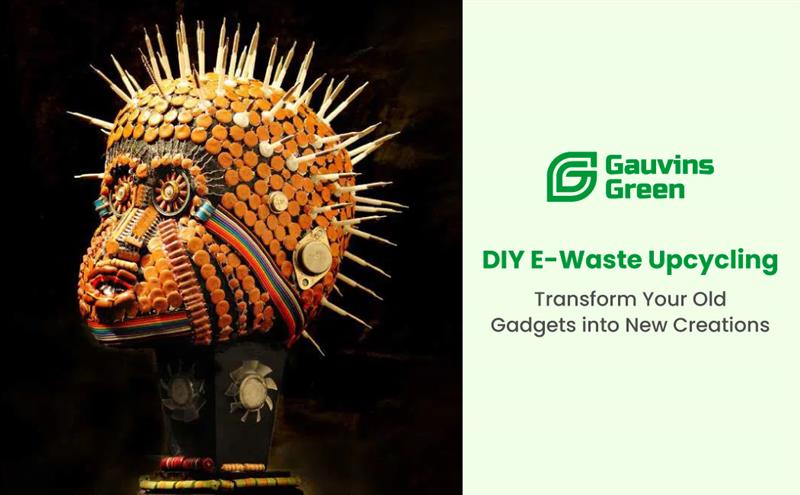7 Ways – Electronic Waste Disposal
Properly disposing of electronic waste, or e-waste, is of paramount importance in today’s technologically advanced society. With the rapid advancement of technology, the accumulation of obsolete or unused electronic devices has become a pressing concern. Improper disposal of e-waste not only poses environmental risks but also leads to the loss of valuable resources. In this article, we will explore seven effective methods for electronic waste disposal, highlighting the benefits and explaining how each approach contributes to sustainable practices.
Recycling: An Environmentally Conscious Approach to Electronic Waste Disposal
Recycling is one of the most widely recognized methods for electronic waste disposal. Through the recycling process, valuable components such as metals, plastics, and glass can be extracted and repurposed, reducing the need for virgin materials. E-waste recycling centers and programs play a crucial role in this process by efficiently collecting, sorting, and processing discarded electronics. By recycling e-waste, we conserve resources, minimize landfill waste, and mitigate the environmental impact associated with electronic device disposal.
Donating or Selling Used Electronics: Extending Lifespans and Reducing Waste
Another sustainable option for e-waste disposal is to donate or sell used electronics that are still in good working condition. By extending the lifespan of electronic devices, we reduce the demand for new products and promote a culture of reuse. Charities and non-profit organizations often accept donations of electronics, providing them to individuals or communities in need. Additionally, selling used devices through online platforms allows others to benefit from these products while providing a financial incentive for the seller.
Trade-In or Buyback Programs: Encouraging Sustainable Upgrades
Many retailers and manufacturers offer trade-in or buyback programs as a convenient and environmentally friendly way to dispose of old electronics. These programs allow consumers to exchange their outdated devices for store credit, discounts on new purchases, or even cash. By participating in trade-in or buyback programs, individuals can reduce e-waste and offset the cost of upgrading to newer models. Retailers and manufacturers often refurbish or recycle the traded-in devices, minimizing their environmental impact.
Manufacturer Take-Back Programs: Corporate Responsibility in E-Waste Management
Recognizing their role in the lifecycle of electronic devices, responsible manufacturers have implemented take-back programs. These programs encourage customers to return their old devices to the manufacturer for proper disposal or recycling. By facilitating the collection and processing of e-waste, manufacturers take responsibility for the environmental impact of their products. Participating in manufacturer take-back programs ensures that electronic waste is managed safely and in compliance with environmental regulations.
Refurbishment and Repair: A Sustainable Alternative to Disposal
Refurbishing and repairing electronics offer an excellent alternative to disposal. By refurbishing, we breathe new life into older devices, reducing the need for new manufacturing. Many electronics can be repaired to extend their lifespan, minimizing the overall e-waste generated. Repairing electronic devices not only saves money but also reduces resource consumption, making it a sustainable choice over immediate replacement.
Proper Disposal Methods: Safeguarding the Environment and Health
When electronic devices reach the end of their useful life and cannot be repaired or refurbished, proper disposal becomes necessary. Electronic devices often contain hazardous components, such as heavy metals and toxic chemicals, which can pose environmental and health risks if not handled correctly. It is crucial to follow guidelines for safe disposal, which may include bringing e-waste to authorized recycling centers or utilizing specialized collection services provided by local municipalities.
E-Waste Collection Events and Drop-Off Centers: Community Efforts for Responsible Disposal
Many communities organize e-waste collection events or establish permanent drop-off centers to encourage responsible disposal of electronic devices. These initiatives offer convenient options for individuals to dispose of their e-waste safely. Local authorities or non-profit organizations often coordinate these events, providing information on the locations, dates, and types of electronics accepted. By participating in these collection events or utilizing drop-off centers, individuals can contribute to a cleaner environment and sustainable e-waste management.
FAQs
How can I find e-waste recycling centers near me?
Finding e-waste recycling centers near you can be done by searching online directories, contacting local municipalities or waste management authorities, or inquiring at electronics retailers.
Are there any financial benefits to recycling electronic waste?
Some e-waste recycling centers offer financial incentives for recycling certain types of electronic devices. Additionally, participating in trade-in or buyback programs can provide store credit or cash rewards.
Can I recycle broken or damaged electronics?
Yes, many e-waste recycling centers accept broken or damaged electronics. These devices are often disassembled and processed for the extraction of valuable materials.
What should I do with data on my old devices before recycling?
Before recycling, it is crucial to ensure that all personal data is securely erased from your old devices. This can be done through factory resets or data wiping software to protect your privacy.
How can I promote e-waste awareness in my community?
You can promote e-waste awareness in your community by organizing educational events, sharing information on social media, or collaborating with local organizations to establish e-waste collection initiatives.



